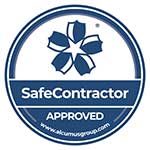Battery Regenerator
DF48 Battery Regenerator restores and prolongs the lifespan of all sizes and types of lead-acid batteries including flooded, gel, AGM, and valve regulated (VRLA) types.
Batteries lose capacity and efficiency due to sulfation, which is the accumulation of extremely hard lead sulfate crystals. Sulfation is increased due to lack of proper maintenance, incorrect charging and inactivity.
DF48 Battery Regenerator can maintain the capacity of lead-acid batteries between 90% and 100% for 15 years. Its main feature is the desulfation –softening and dissolving of lead-sulfate crystals during a multi-stage process.
By using the latest and most effective technologies, we contribute to the health of our planet by prolonging service life of the batteries, reducing the amount of lead waste and also reducing electricity consumption.
DF48 has been welcomed by customers in Germany, Austria, Finland, UK, Slovakia and other European countries.


DF48 CAN BE USED FOR WIDE RANGE OF BATTERIES
- Heavy transport and handling equipment
- Mining Machinery and Service Equipment
- Aerial Lifts
- Fork-lift Trucks
- Cranes
- Golf Carts
- Scrubber-Sweepers
- Backup Power Systems

The multifunction device DF48 is fully operable via PC, tablet or a mobile phone.
You can also control it over the Internet.
PRICE – £9800.00 + VAT
INCLUDES TRAINING & 3 MONTHS SUPERVISION OF ALL REGENERATION PROCESSES
With lockdown restrictions easing, many businesses across the UK and beyond are preparing to get back to work. The enforced downtime means that there’s a lot of forklifts out there that have been unused for some time. With more and more businesses getting back to full operations, getting your fleet back to full operating capacity as quickly as possible is going to be a top priority for any logistics managers. If you have a battery-powered forklift fleet, either lead-acid or lithium-ion, proper forklift battery maintenance is a key part of this.
There are a lot of factors to consider in order to get your forklift batteries back to full operational capacity, starting with what type of battery your forklifts are using. Let’s start with the proper process for checking and recharging a lead-acid battery after a period of downtime. We’ll cover lithium-ion batteries further down the page.
WET LEAD ACID BATTERY FORKLIFTS
If your forklifts run on lead-acid batteries, then proper maintenance after a period where the battery has been out of use is absolutely essential. The sulphuric acid in the batteries is prone to oxidising when the battery is stationary. This ‘sulfation’ builds up on the plates inside the battery and reduces the capacity of the plates, which reduces the effectiveness of the battery. The water and acid inside the battery will also begin to separate when the battery is left unused. However, this potential damage can be reversed by following through with this process of checks before bringing the battery back into full operation.
If the battery has been left charging:
1. Firstly, inspect the battery carefully for any outer signs of damage to the casing and cables. If there is no visible damage, proceed.
2. Return to use and once the indicator displays low power, place the battery back in a charger and allow it to fully charge.
3. Once the charge is complete, check the battery’s electrolyte levels. You may need to top up to the battery’s fill line with deionised water. Only top up once you have finished charging the battery.
4. Return the battery to use, keep in mind that it will likely still not operate at full capacity yet, return the battery to a charger when low power is indicated.
5. Always allow the battery to charge fully, do not short charge or opportunity charge the battery during this time.
6. Repeat this process for a couple of weeks and your battery should be operating at full capacity once more.
If the battery has been left without charging:
1. The first step is inspecting the battery for any signs of outer damage to the casing or cables. If the battery is undamaged then proceed.
2. Put the battery in a charger, let it complete a full cycle, and check that it charges. If the battery does not charge at this stage, contact your provider as there is a fault.
3. If the battery is okay and charging, let it charge fully but do not let it charge for a second cycle.
4. Once the charging is complete, check the electrolyte levels in the battery and top up to the battery’s fill line with ionised water if required.
5. Return the battery to use, remember that it will likely be operating at reduced capacity during this period.
6. Once the battery reaches low power on the BDI, return it to a charger and let the battery charge fully. Do not partially charge the battery at this time.
7. Repeat the process of using and fully charging the battery and after one to two weeks you should see the battery return to full capacity use.
Following these steps may seem time-consuming at first but the efficiency saving of having a fully operational forklift fleet at a time when demand will be ramping up is well worth the time investment.
Lithium-ion (Li-ion) battery forklifts:
If your fleet is equipped with the latest lithium-ion batteries, then you have less to worry about in terms of the time you will need to invest into getting these batteries back working as needed. There are still best practice steps you can follow to maintain the health of the batteries in the long term, though.
1. The first step is always checking for any visible signs of damage to the battery casing and wiring or contacts. If the battery is free from damage, then proceed.
2. Check your battery life, if your battery has fully discharged then attempt to charge the battery normally. If the battery does not charge, contact your provider as there may be a fault
3. Unlike lead-acid batteries, Li-ion batteries do not benefit from a full charging cycle after prolonged use. Instead, it is better to partially charge the battery between shorter periods of use.
4. It may be tempting to use faster (higher voltage) charging to get your batteries back up to speed initially but the heat generated by this can harm long term battery life, stick to your regular charging method to avoid this.
Those using lithium-ion batteries will, in theory, have an easier time getting their operations back to full capacity. The batteries need less hands-on maintenance but that doesn’t mean you should neglect to care for them, there are still steps you can take to prolong the operational life of these batteries.
MAXIMISING THE LIFESPAN OF YOUR FORKLIFT BATTERY
Once your batteries checks have been completed and you’re operating normally once again, it’s time to think about how to get the most out of your forklift batteries in the long term. Proper maintenance could see your battery, whether lithium-ion or lead-acid, last up to five years. Getting it wrong could cut this lifespan in half. As mentioned above, lithium-ion batteries do not require as much hands-on maintenance as lead-acid batteries, so only some of these steps will apply, we’ll indicate where that is the case. Here are the most important factors to consider in order to maximise your forklift battery’s life:
STORAGE CONDITIONS – TEMPERATURE & MOISTURE
Both lead-acid and lithium-ion batteries will be negatively affected by high temperatures, though the effect is worse on lead-acid batteries. Always ensure that batteries are stored in a cool and dry environment. Try and perform any changing of batteries or maintenance in the same conditions. This will also help prevent oxidation on metal contacts that can be caused by moisture.
AVOID FAST CHARGING
Fast charging can be tempting for the potential reduction in downtime but the heat generated during the process will harm your long term battery life, this is doubly true for lead-acid batteries. Avoid fast charging to prolong your battery life. It is also a good idea to avoid opportunity charging with lead-acid batteries. Plan for extended charges instead, letting batteries cool down during short breaks and lunches will have a much better effect on long term battery health.
CHARGE AT 20% AND CHARGE FULLY
For lead-acid batteries, it is important to begin charging at about 20% battery charge, (when your battery life indicator turns red) fully discharging the battery can cause damage. Once the battery reaches the 20% mark, it should be replaced and allowed to complete a full charging cycle before being reused. A typical battery will last for roughly 1,500 charging cycles, whether it’s partially or fully charged each time, so ensuring you run the battery to the safe limit, then fully charge it before using again, will ensure you get the longest possible use out of the battery.
KEEP YOUR WATER LEVELS TOPPED UP
The water inside a lead-acid battery is a very important component and you should ensure this is kept topped up to the correct level. Most manufacturers suggest topping up with ionised water every five to ten charges. Always top up after charging, not before. Use this opportunity to check for the signs of sulfation on the battery’s plates. If you notice an excessive build-up of these white crystals then battery performance will be affected and you will need to call an engineer to help reverse the process.
KEEP YOUR BATTERY CLEAN AND SAFE
Always store your batteries safely and use the correct equipment to transport and replace them. Batteries are heavy and usually require pallet transport. Always ensure you have an appropriate space for transport, storage, and maintenance of batteries. Keeping your battery free of damage will ensure your warranty will remain intact in case of any faults. Make sure any spillages are cleaned immediately and keep your battery clean and free of dirt and grime to avoid any corrosion of the casing or contacts.
Following all these steps will ensure you get the most out of your forklift batteries. Temperature control will be especially important as we head into the summer months. There are also steps you can take as a logistics manager to ensure that the precautions above don’t interfere with operations where possible. For example, if you plan shifts and breaks around battery charge time and turnaround time you can create efficient patterns of work that will minimise downtime.
Getting back to work may be difficult but following the right steps can help your fleet of forklifts get back to top working condition in the shortest possible time. This will be crucial as the increased demand of the coming months starts to be felt in the supply chain. We hope these easy steps for forklift battery care can help you take one worry off your mind.
If you are looking for a forklift for sale or hire, battery or gas, then do get in touch with our friendly team who can talk you through the options.







